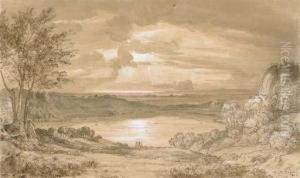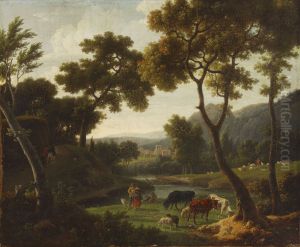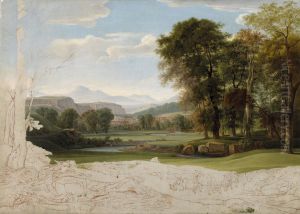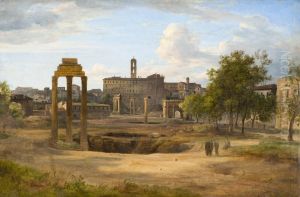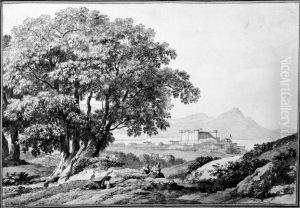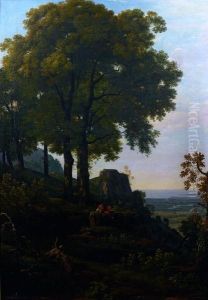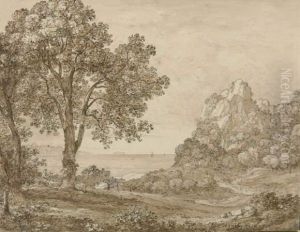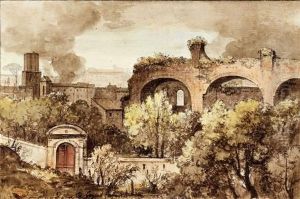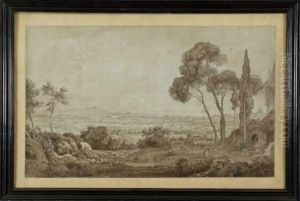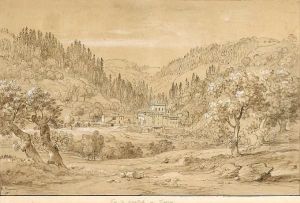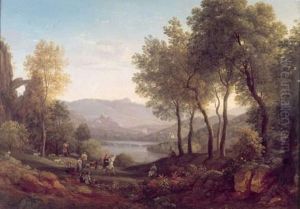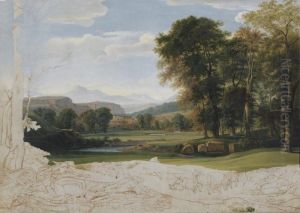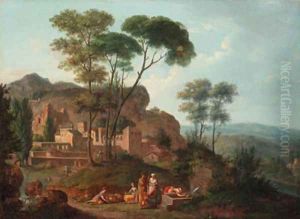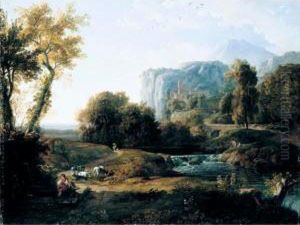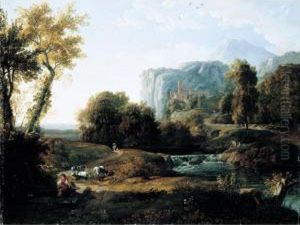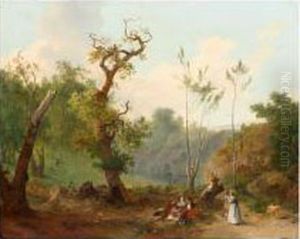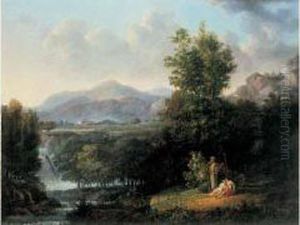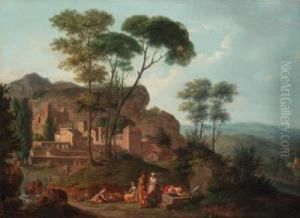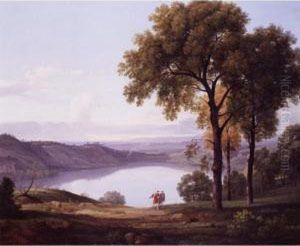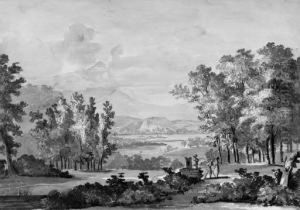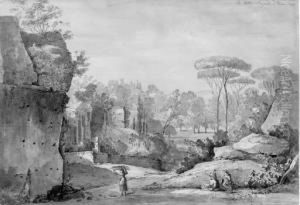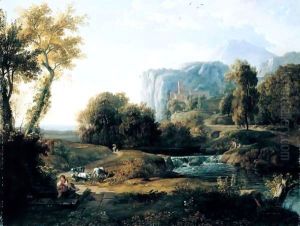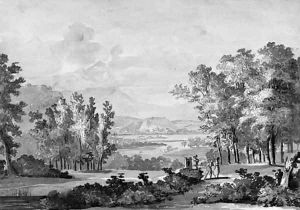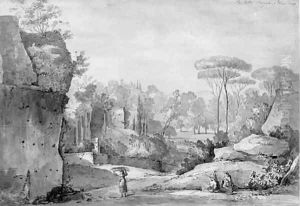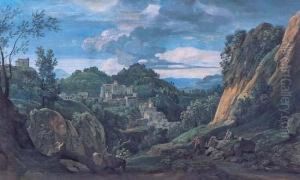Nicolas-Didier Boguet Paintings
Nicolas-Didier Boguet was a French painter and engraver born on May 10, 1755, in Paris. He is known for his portrait paintings and historical scenes, although not among the most prominent artists of his time, he was a respected member of the French art community during the late 18th and early 19th centuries. Boguet received his artistic training under the guidance of Joseph-Benoît Suvée and Jean-Baptiste Regnault, who were influential figures in French neoclassical painting.
Boguet's artistic career was intertwined with the turbulent political climate of France, which included the French Revolution and the subsequent Napoleonic era. Despite the challenges of the time, he managed to secure commissions and participate in the Salons, which were official art exhibitions held in Paris. His works were exhibited at the Salon for several years, and he gained recognition for his technical skill and attention to detail.
His style was characterized by a blend of neoclassical ideals and a certain degree of romantic expression, which was becoming more popular at the time. Boguet's engravings and illustrations also contributed to his reputation, as they were often featured in books and periodicals, helping to disseminate his work more widely.
After a long career, Nicolas-Didier Boguet passed away on April 7, 1839, in Paris. While he may not have achieved the fame of some of his contemporaries, his contributions to French art during a period of significant change and upheaval are noteworthy. Today, his works can be found in various art collections and museums, where they continue to be appreciated by art enthusiasts and historians alike.
